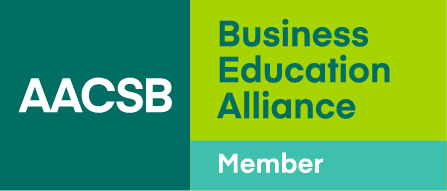A Framework for Human-Centric AI-First Teaching
- With the rapid rise of generative artificial intelligence, higher education is shifting away from traditional teaching models and toward AI-integrated approaches that emphasize ethical application and personalized feedback.
- Human-centric AI-first education encourages students to leverage AI to support their continuous learning journeys, as they develop critical thinking, ethical awareness, and real-world problem-solving skills.
- While the adoption of AI might raise concerns related to ethics and accessibility, it also promises to democratize learning, improve engagement, and prepare future leaders for an AI-powered world.
The rapid rise of generative AI (GenAI) tools such as ChatGPT is forcing business educators to fundamentally rethink their curricula. Unfortunately, traditional teaching models are not sufficient to equip our students for a world where GenAI is rewriting the rules of work and leadership.
The challenge for business schools is clear: How can they adapt to this new reality while retaining their human-centric values and relevance to society? The answer lies in the adoption of a human-centric AI-first (HCAIF) pedagogical framework. This model offers a blueprint for leveraging AI to customize student learning, enhance feedback, and foster competency-driven growth.
By reimagining how we deliver education, we can prepare students to lead in an AI-driven future. The question is not whether we should embrace this transformation, but how—and how quickly—we can make this transformation happen.
Why We Must Innovate
As business educators, we work to accomplish five primary objectives in our classroom. These include:
- Tailoring learning to individual student needs.
- Offering continuous feedback to support summative assessment and iterative growth.
- Developing competencies that are essential to applying knowledge in real-world contexts.
- Teaching tacit knowledge that is required for opportunity recognition, venture creation, and strategic decision-making.
- Promoting the ethical and appropriate use of GenAI, so that students do not compromise learning by using new technological tools to obtain easy, immediate answers.
Unfortunately, conventional teaching strategies make it difficult to achieve these goals. In fact, educators have been seeking ways to transform traditional teaching models long before the advent of ChatGPT.
For example, experiential learning theory, introduced by educational theorist David Kolb in the 1980s, emphasizes the importance of hands-on, real-world learning. Similarly, a 2007 research paper by Peter Brusilovsky and Eva Millán highlights how adaptive learning systems can address these challenges by tailoring content delivery and feedback to individual learners.
GenAI’s emergence has only further exposed the limitations of traditional pedagogical frameworks. But GenAI also offers us unprecedented opportunities to achieve the transformation that scholars such as Kolb, Brusilovsky, and Millán describe. Not only that, as we experiment with AI tools in our classrooms, we also must delve more deeply into questions related to ethics, equity, and the preservation of human-centric values in learning.
Five Pillars of AI-Assisted Education
What, exactly, is a HCAIF framework? In short, it is a structured, ethical, and adaptive approach to integrating GenAI into business education. This approach was developed by faculty at Newcastle Business School at the University of Newcastle in Australia after 20 months of extensive research and experimentation related to using GenAI to teach entrepreneurship. The framework now underpins a new undergraduate program in innovation and entrepreneurship.
The Human-Centric AI-First Pedagogical Framework

As shown in the graphic above, the HCAIF framework is designed around five foundational pillars:
Preparation—In this phase, teachers “collaborate” with AI to design exercises and assessments that align with clearly defined goals and competencies. In the process, teachers work toward establishing a robust repository of resources that can be dynamically updated and tailored to evolving educational needs.
Personalized Learning—Here, students engage with content using AI-created exercises and tools, which supports individualized learning experiences. Students use GenAI tools to support their creativity, research, content creation, group formation, prototyping, and presentations. Additionally, they use AI to facilitate team-based projects; enable exploration and co-creation; and receive immediate, personalized feedback. Finally, students receive AI insights, along with peer reviews, which they can use to reflect on their progress, refine their understanding, and continuously improve their outcomes.
Classroom Engagement—Teachers, students, and AI collaborate to create immersive learning environments that foster active participation. Teachers act as coaches who provide targeted feedback, facilitate teamwork, and encourage peer review. Teachers also integrate reflection and planning into every class session to ensure that students apply their learning effectively.
Summative Assessment—Teachers use AI tools to generate personalized assessments, feedback, and grading. At this stage, students are assessed on both the process of learning and the quality of outcomes. Teachers oversee and refine the AI-generated assessments to ensure their accuracy and alignment with academic standards.
Teachers can use AI-generated data not only to identify students’ strengths, but also to offer tailored support and guidance, so that all students receive the help they need when they need it.
Personalized Monitoring—For this final phase, teachers deploy AI to continuously monitor student progress and receive real-time insights into students’ individual learning trajectories. Teachers use this data not only to identify students’ strengths, but also to offer tailored support and guidance, so that all students receive the help they need when they need it.
The HCAIF framework is further underpinned by two essential factors:
- Attribution—Students must clearly show how and where they used GenAI in their work. This allows educators to evaluate students’ problem-solving capability, critical thinking, and proficiency in co-creating with AI tools.
- Reflection—Students maintain journals in which they analyze and reflect on their learning and use of GenAI in every course. In their journals, students also assess GenAI’s effectiveness, limitations, and impact.
This dual focus ensures that students develop the necessary metacognitive skills to engage ethically and effectively with GenAI in real-world contexts.
Examples From the Classroom
Nowhere is the need for personalized learning more apparent than in entrepreneurship education, where skills related to adaptability, creativity, ethical decision-making, and real-world problem-solving are paramount. At Newcastle Business School, we are taking a bold step to create immersive, impactful educational experiences for students in our innovation and entrepreneurship program.
Here are several examples of how we have adopted the HCAIF framework in our entrepreneurship courses:
Preparation. In Traction and Growth, a third-year undergraduate course, faculty use GenAI-powered tools to curate relevant case studies, examples, and exercises, each aligned with weekly learning objectives. Faculty also use the technology to create a repository of startup-specific insights (Canva’s pricing strategies, for example), as well as to design pre-workshop activities and ensure consistency across learning stages.
Personalized Learning. In Venture Funding, students use GenAI tools to co-create pitch decks and refine their startup investment readiness plans. For example, during a week dedicated to the topic “investment readiness,” students explore AI-generated templates to develop financial projections tailored to their chosen ventures. Students also receive peer feedback and AI insights, which they can reference in their reflections and use to improve their work.
In Traction and Growth, students write weekly entries in personal journals; in these entries, they reflect on their learning journeys, as well as on how GenAI insights and peer feedback have influenced their decision-making processes. Teachers review the journals periodically and provide personalized guidance to support ongoing development.
Classroom Engagement. In Sales Mastery, student teams practice sales pitches in workshops and receive AI-generated sentiment analyses to improve their messaging. Students also gain hands-on experience by completing role-playing exercises, such as negotiating with a real-life business. During these exercises, teachers use AI tools to provide targeted feedback on team dynamics and individual contributions.
Summative Assessment. In the last week of Traction and Growth, students present their final customer growth strategy reports. Teachers use AI tools to evaluate the reports, based on how well students demonstrate competencies such as clarity of strategy and innovation. Teachers then review AI-generated feedback, adding personalized comments to ensure a comprehensive evaluation—effectively blending AI’s efficiency with their own human oversight.
Personalized Monitoring. In the Startup Fundraising Process module of Venture Funding, teachers use AI to continuously monitor students’ progress. For instance, in a week covering the topic “strategic clarity,” AI tracks students’ engagement with pre-workshop activities and flags students who are struggling with specific concepts. Teachers use this data to provide targeted support during workshops and ensure that all students are prepared for subsequent activities.
As we adopt the HCAIF pedagogy, we are finding ways to overcome the limitations of conventional pedagogical methods. GenAI enables us not only to adapt our teaching to the learning needs of individual students, but also to align our curriculum with desired learning outcomes and real-world applications.
Initial Lessons, Future Implications
We will continue to pilot, test, and refine the HCAIF framework at Newcastle Business School. Already, we have learned the following valuable lessons relevant to the broad adoption of AI in the business curriculum:
GenAI tools can enhance engagement. Students often embrace AI-generated content, but they require structured guidance on how to integrate AI into the learning process and evaluate its effectiveness.
GenAI can support adaptive learning pathways. Teachers can use GenAI tools to adjust the difficulty and focus of learning exercises based on each student’s needs. According to a 2023 literature review led by Ilie Gligorea, such adaptive systems improve learning outcomes.
GenAI must be integrated in balanced ways. AI-assisted activities are most effective when they are complemented by human-led workshops. This dual approach supports the creation of holistic and collaborative learning environments.
Universities can proactively address ethical concerns arising from an AI-first pedagogical framework through targeted professional development, dedicated AI ethics courses, and interdisciplinary ethics committees.
We believe the HCAIF framework will have four key implications for the future of business education:
It will redefine pedagogical integrity. Even as GenAI plays a larger role in education, we must preserve human-centric values. The role of human educators as coaches and facilitators will remain indispensable. Human educators will ensure that AI fosters critical thinking and human connection, and that students’ learning is meaningful, ethical, and deeply engaging.
It will expand accessibility. According to a 2019 literature review led by Olaf Zawacki-Richter, AI has great potential to help higher educational institutions bridge educational gaps regionally and globally. Schools can use the technology to cater to diverse student populations, including those in resource-constrained environments.
It can be adapted to different disciplines. While developed for entrepreneurship education, the HCAIF framework is based on principles that can be adapted to other business disciplines such as finance and marketing, as well as to fields such as medicine, engineering, and the arts.
It will prepare future leaders. By developing their GenAI proficiency, critical thinking, and ethical awareness, graduates will be positioned to improve efficiencies, generate value, and lead organizations in a complex, interconnected business landscape.
Opportunities for Transformation
Of course, adopting an AI-first pedagogical framework will pose challenges, but these challenges are not insurmountable. For example, the use of AI in the classroom raises significant ethical concerns, including those relating to data privacy, algorithmic bias, and equity. Universities can proactively address such concerns by integrating targeted professional development and dedicated AI ethics courses across disciplines. They can establish interdisciplinary ethics committees to oversee projects and policies, while also fostering collaborative partnerships with industry, policymakers, and nonprofit organizations to ensure real-world alignment.
In addition, staff and students will require comprehensive training to transition to this paradigm—and some might even resist the need for change altogether. Schools will need to prioritize clear communication and ongoing professional development to ensure a smooth adoption of new practices.
Resource-constrained institutions might have limited access to advanced GenAI technologies and expertise. However, they can form strategic academic partnerships with key technology players and take advantage of free large language models, or LLMs, such ChatGPT, Claude, or Gemini to democratize access. As Satish Nambisan of Case Western Reserve University highlights in a 2017 paper, being part of a collaborative ecosystem can help institutions navigate resource limitations and foster educational innovation.
Despite the challenges ahead, business schools are now in a transformative moment. We must continue to experiment and refine our pedagogical frameworks, as well as pursue future research that will allow us to validate these approaches and ensure their effectiveness across diverse educational contexts. By fostering innovative, adaptable, and scalable educational models, we will help our institutions maintain their relevance to business and society.




